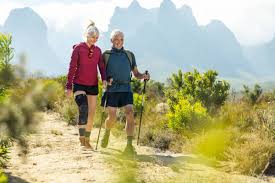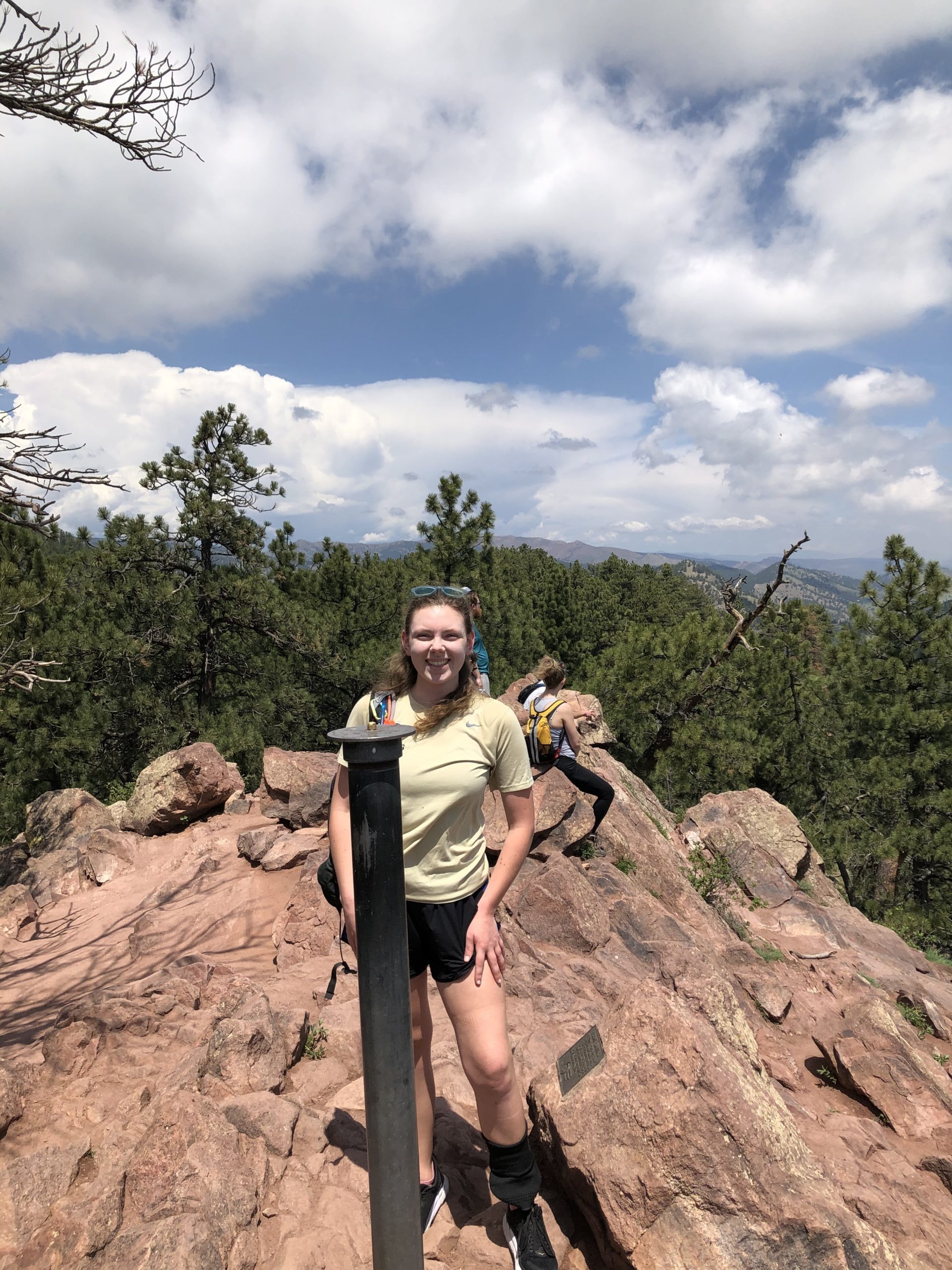Hiking after ACL surgery represents a profound achievement in the rehabilitation process, symbolizing the transition from a period of restricted mobility to the rediscovery of the great outdoors. The anterior cruciate ligament (ACL) is a critical component in knee stability, and when injury strikes, surgical intervention becomes a common necessity. As individuals navigate the intricate path of recovery post-ACL surgery, the allure of returning to activities such as hiking beckons. This comprehensive exploration delves into the multifaceted considerations, challenges, and invaluable tips associated with embarking on the exhilarating journey of hiking after ACL surgery.

Understanding ACL Surgery
Hiking after ACL surgery entails a thorough understanding of the intricate procedure involved in repairing or reconstructing the torn ligament. Typically, grafts from other tendons within the body are used in this meticulous surgery. The aftermath necessitates a conscientious rehabilitation process focused on restoring strength and stability to the knee. Adherence to a structured recovery plan, which includes phases of physical therapy and the gradual reintroduction of various activities, is crucial for a successful outcome.
Is Hiking After ACL Surgery Achievable?
Embarking on hiking after ACL surgery requires a nuanced comprehension of the recovery phases. Initially, the focus is on mitigating swelling, reclaiming a full range of motion, and fortifying the muscles surrounding the knee. As individuals progress through these phases, dynamic exercises take center stage, shifting the focus to enhancing flexibility and stability. The pinnacle of the recovery journey involves sport-specific training, preparing individuals for the unique demands of activities like hiking.
Seeking Clearance for Hiking After ACL Surgery
Before venturing into the realm of post-surgery activities such as hiking, a critical prerequisite is consulting with healthcare professionals. Orthopedic surgeons and physical therapists serve as guiding beacons, providing personalized advice rooted in the individual’s progress and overall health. Securing clearance from these medical experts becomes a vital checkpoint, ensuring that the knee is adequately prepared for the rigorous demands of hiking after ACL surgery.
Gradual Approaches to Hiking After ACL Surgery
Approaching hiking after ACL surgery demands a deliberate and gradual mindset. Initial forays into the outdoors should be confined to easy and flat terrains, serving as litmus tests for gauging the knee’s responsiveness. This cautious approach allows individuals to assess their comfort levels, identifying and addressing potential challenges. As confidence and strength burgeon, the natural progression involves the gradual exploration of more challenging trails, all while maintaining vigilant awareness of any signs of discomfort.

Choosing the Right Footwear for Hiking Post-ACL Surgery
The choice of footwear plays a pivotal role when contemplating hiking after ACL surgery. Optimal choices encompass shoes that offer impeccable support, stability, and cushioning. This careful selection significantly mitigates the impact on the knee joint, amplifying comfort and concurrently minimizing the risk of injury during the hiking escapade. Ensuring that the footwear aligns with the unique needs of post-surgery recovery is paramount.
A Step-by-Step Approach to Hiking After ACL Surgery
Navigating varied terrains becomes an integral part of hiking after ACL surgery. Initial ventures should adhere to well-maintained trails with minimal obstacles, allowing for a gradual acclimatization process. An astute recognition of the potential challenges posed by uneven or rocky paths is crucial, emphasizing the importance of a step-by-step progression to build strength and confidence for diverse terrains.
Can a Strong Muscle Routine Unlock Successful Hiking After ACL Surgery?
The bedrock of a triumphant return to hiking after ACL surgery lies in a robust exercise routine that focuses on fortifying the muscles surrounding the knee. Targeting key muscle groups such as the quadriceps, hamstrings, and calf muscles is instrumental in providing additional support to the knee joint. Engaging in consistent strength training emerges as a cornerstone, enhancing overall stability and mitigating the risk of re-injury during the rigors of hiking.
Is Cardiovascular Endurance the Key to Enjoyable and Sustainable Hiking After ACL Surgery?
Hiking after ACL surgery necessitates not only muscular strength but also cardiovascular endurance. Integrating cardiovascular exercises, such as cycling or swimming, into the rehabilitation routine becomes imperative. This concerted effort toward improved cardiovascular health contributes significantly to heightened stamina during hikes, transforming the overall experience into one that is both enjoyable and sustainable.
A Crucial Guide for Hiking After ACL Surgery
While pushing boundaries is intrinsic to the recovery process, equal emphasis must be placed on paying attention to the nuanced language of pain signals. Discomfort or pain experienced during or after a hike should never be dismissed. These signals serve as beacons, potentially indicating overexertion or latent issues with the knee. In instances where persistent pain manifests, seeking the counsel of healthcare professionals for a comprehensive evaluation is an imperative course of action.
Can Supportive Gear Elevate Safety in Hiking After ACL Surgery?
Enhancing the protective layer during hiking after ACL surgery involves the judicious utilization of supportive gear. Knee braces or sleeves, intricately designed for support and compression, offer an added layer of stability. However, the pivotal caveat here is the necessity of consulting healthcare professionals to ascertain the suitability of the chosen gear vis-à-vis the individual’s specific needs and stage of recovery. Supportive gear can be a valuable ally in ensuring a secure and controlled hiking experience.
Is Flexible Preparation the Key to Comfortable Hiking After ACL Surgery?
A pivotal aspect of the preparatory routine for hiking after ACL surgery involves safeguarding against stiffness and nurturing overall joint function. Regular and targeted stretching exercises, meticulously incorporated into the routine, serve to enhance flexibility in the knee and its surrounding musculature. This meticulous attention to flexibility contributes significantly to cultivating a seamless and comfortable hiking experience, reducing the risk of strain during diverse movements.
Is Listening to Your Body the Key to a Safe and Personalized Return to Hiking After ACL Surgery?
Arguably the most pivotal aspect of the entire undertaking of hiking after ACL surgery is the discerning act of listening to one’s body. Acknowledging the unique trajectory of every individual’s recovery journey, it becomes paramount to attune oneself to the nuanced responses of the knee to different activities. The art lies in the adaptive adjustment of the intensity and duration of hikes, thereby ensuring a personalized and effective approach to recovery. Developing a keen awareness of how the body responds to different terrains and conditions is integral to a safe and successful return to hiking.
Mindful Slope Strategies for Knee Safety in Hiking After ACL Surgery
Navigating slopes during a hike post-ACL surgery necessitates an extra layer of caution. Mindful descents and ascents serve as strategic measures to distribute weight evenly across the legs, thereby reducing strain on the meticulously reconstructed ligament. Adopting a deliberate and measured pace, supplemented by the use of trekking poles for added support, collectively serves to minimize the impact on the knee during such elevation changes. This mindful approach to descents and ascents is crucial for maintaining stability and preventing undue stress on the knee joint.
Optimizing Hiking Success Post-ACL Surgery
Beyond the realm of targeted exercises, the holistic success of hiking after ACL surgery is intricately intertwined with the maintenance of a healthy lifestyle. Adequate rest, underpinned by a balanced diet and proper hydration, emerges as foundational pillars that not only support overall recovery but also fortify the body’s resilience during physical activities. A wholesome lifestyle contributes to the body’s ability to heal and adapt, enhancing the overall success of hiking endeavors.
Unlocking Hiking Success Post-ACL Surgery: The Power of Mental Resilience
In the comprehensive narrative of recovery, the psychological facet assumes a role of paramount importance. Building mental resilience becomes an indispensable component for individuals embarking on the journey of returning to hiking after ACL surgery. Setting realistic goals, celebrating the myriad of small achievements, and fostering a positive mindset throughout the intricate recovery process collectively constitute a substantial difference in the overall experience. Mental resilience is the driving force that propels individuals forward, instilling confidence and determination to overcome challenges on the trail.
Conclusion
The culmination of the journey, marked by the triumphant return to hiking after ACL surgery, stands as a testament to the amalgamation of careful planning and a patient approach. The incorporation of targeted exercises, the sage counsel of healthcare professionals, and the attentive listening to the body’s signals collectively pave the way for individuals to not merely traverse the beauty of the outdoors but to do so in a manner that ensures a safe and successful return to hiking.


